Text



You would give away your granddaughter, the flower of the French aristocracy, to a libertine?
#the last mistress#Hermangarde#Barbey d’Aurevilly#1835#film costumes#Hermangarde de Polmaron#Roxane Mesquida#film bride
9 notes
·
View notes
Text
Sometimes I think about how the only thing Julian left behind after packing up his belongings from his sanctuary-office was a Japanese print Bunny had gifted him. He packed up every single little thing, and left that behind.
11 notes
·
View notes
Text
In 1941, the sixteen year old Polish boy Walerjan Wróbel is sent to Germany as a forced laborer. Isolated, exploited and utterly alone, he develops a desperate homesickness and attempts to escape. What follows is a nightmarish mixture of National Socialist judicial procedure and cruelty which was perfectly encapsulated in American Prosecutor Telford Taylor’s famous quote: “The dagger of the assassin was concealed behind the robe of the jurist.”
#history#documentary#Poland#forced labor#exploitation#injustice#Walerjan Wróbel#child labor#the homesickness of Walerjian Wróbel
2 notes
·
View notes
Text






Art Nouveau Colored Glass | International Art Glass Catalogue
38K notes
·
View notes
Text
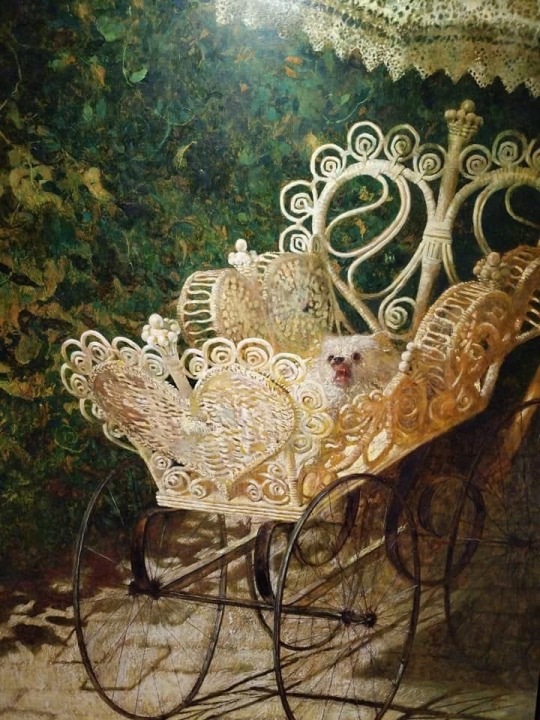

A Very Small Dog, Jamie Wyeth (1980)
48K notes
·
View notes
Note
To be precise, what I posted was a direct quote from Bernard Vinot’s biography of Saint-Just, where he quotes Erckmann-Chatrian as having said that about Saint-Just. I looked at the book again and unfortunately there is no footnote on the page with the quote, nor any mention of the Erckmann-Chatrian in the bibliography so I am at a loss in regards to where he found it. However, since Vinot is an authority on Saint-Just, I trust that the quote does, in fact, exist.
how many blonde sj’s do we have? I can only remember sieburg? I think? Calling him blonde. How common of a phenomenon was blonde sj
i might be wrong but i don’t think we have contemporary comments about his hair color, especially about it being blonde. as for later descriptions, @obscurehistoricalinterests wrote here that Erckmann-Chatrian described him as “small and blond, with a very beautiful figure and generally very well dressed, but rigid and prideful” but c’est pas sourcé
i’d say this idea of him being possibly blonde comes from the Lebas pastel where his hair does look dark blond. since this was the 18th century we can’t forget about hair pommade+powder, so it’s also possible his actual hair (untreated) was darker than what the portrait shows
22 notes
·
View notes
Text

Poodle on table with writing instruments, Jacques-Barthélemy Delamarre.
65 notes
·
View notes
Text

Saint-Just‘s death certificate.
85 notes
·
View notes
Text



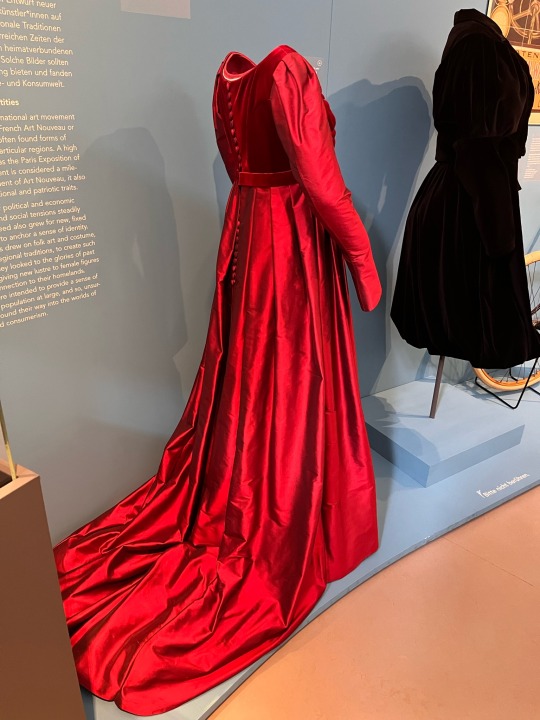

Art Nouveau Reception Dress by Hans Christiansen, 1901.
Source: Personal archive, from visiting the Goddesses of Art Nouveau exhibition in Brunswick, Germany.
#art nouveau#fashion history#jugendstil#dress#historical fashion#hans christiansen#what a time for fashion!
8 notes
·
View notes
Text
A small town in Saxony produces, strangely enough, two young and ambitious impostors in very different time periods. One ends up becoming a symbol for the local queer community. The other, a war criminal.
youtube
#history#documentary#the documentary doesn’t mention this but Sophia is widely regarded as a symbol for the queer community#saxony#curious stories#Youtube#sachsen#trickster#impostor#who hasn’t thought about running away from an unwanted marriage and roaming the land?
8 notes
·
View notes
Note
hi! i’ve recently started getting into the french revolution and i’ve seen a lot on sj’s ‘totalitarian views’ and the quote ‘You have to punish not only the traitors, but even those who are indifferent; you have to punish whoever is passive in the republic, and who does nothing for it’ but i dont see many people here discussing it, so i was wondering if there are any misconceptions abt his views, and if not, why people dont talk abt it more? thanks!
I'm a sporadic contributor to the French Revolution tag here on Tumblr and I must confess I read very little of what is being discussed on other people's blogs due to a lack of time. So I feel that I am not qualified to answer that question in relation to Tumblr specifically.
There are many good books out there which soberly touch on the paranoic crescendo which swept up the revolutionaries and led them to commit more and more extreme and irreversible actions in the name of protecting the most precious and extraordinary thing they created: the Republic. I wouldn't take Tumblr as the yardstick of the discourse on Saint-Just.
63 notes
·
View notes
Text
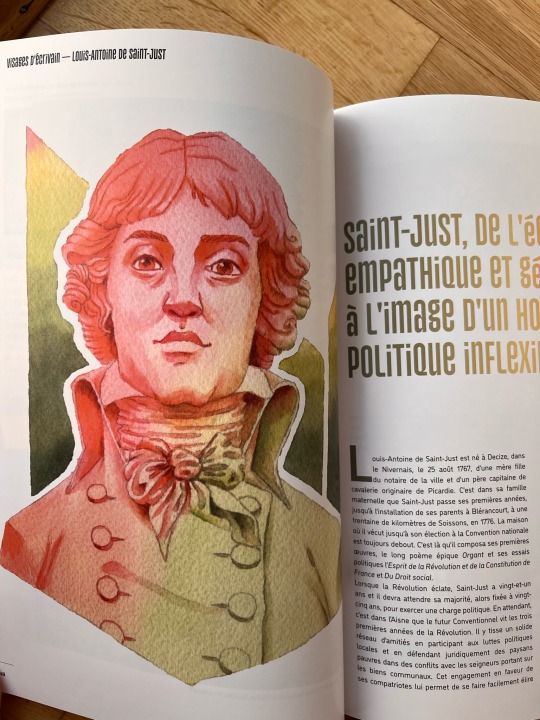
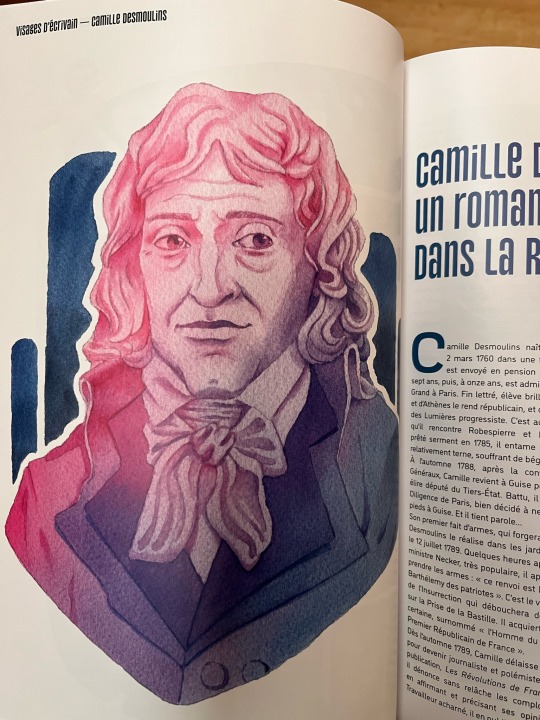
The book Visages d‘écrivain contains articles dedicated to some of the most important French writers. Among the myriad of personalities featured in this book we spot two familiar figures: Saint-Just and Desmoulins. The illustrations in the book are made by Anne-Claire Giraudet.
#frev#french revolution#history#louis antoine de saint just#saint-just#desmoulins#camille desmoulins#portraits of a writer
41 notes
·
View notes
Text




Meissen Forget-Me-Not coffee and tea set, Germany.
839 notes
·
View notes
Text
The Republic is worth a sauce gribiche
by Aurélien Soucheyre
„21 January is the day of the tete de veau dish, to celebrate the day in 1793 when the monarchy of divine right lost its own head. But where does this tradition come from and what's the recipe?
It's been going on for over two hundred years: every 21 January, thousands of gourmets enjoy a tete de veau at republican banquets. The date is no coincidence: it's the anniversary of the beheading of Louis XVI in 1793, the ultimate symbol of the fall of the Old Regime. The tradition comes from the pamphleteer Romeau, who in 1794 invited people to eat a pig's head on 21 January, a biscuit in the shape of the Bastille on 14 July and a 'fat chicken of India' on 10 August, the date of the collapse of royalty in 1792. Only the 21 January head has survived. It went from being a pig, referring to a king caricatured as a piglet in 1791, to a calf in 1848, when the Second Republic was established. The Third, Fourth and Fifth Republics then refrained from changing the animal. As for the sauce, it has evolved over the years, and it is the gribiche that has held the rope for decades, composed, for the purists, of eggs, mustard, oil, parsley, tarragon, chervil, and above all the indispensable capers and gherkins, which represent neither the body nor the breasts of the deceased king.
It's just that the practice has nothing to do with an anthropophagic delirium. It is not the individual Louis XVI who is being eaten, who had already lost his crown and had once again become "citizen Louis Capet". It is the monarchy of divine right that is being swallowed, the political regime itself, digested by the republican stomach. And if that sounds far-fetched, it's because the original idea came from England, as recounted by Gustave Flaubert in E'Education Sentimentale. On 30 January 1649, the British were the first to decapitate their monarch, by attacking Charles 1st. They were also the first to eat calves' heads on that date, in response to the royalists' commemorations. And even though the English throne has since been reoccupied, without absolute powers, the French replay the match every 21 January, with the royalists in the Basilica of Saint-Denis cowering on one side and the republicans laughing on the other.
Cold or hot
So there are confreries of calf's head eaters all over France on D-Day, a combination of English humour and French terror, all under the revolutionary flag. A great fan of tete de veau and "roborative cuisine", according to legend, former French President Jacques Chirac has never said whether he discovered this speciality at a banquet under the tricolour cockade, somewhere between Paris and Corrèze. But he did help to popularise the dish. It can be eaten cold, with little touches to the eyelids, nostrils, tongue and brains, for those who like to chew, or hot like a pot-au-feau. A matter of taste. Because the French Revolution is neither cold nor hot: it's lukewarm, because it's still waiting to be over.“
Tete de veau with gribiche sauce
Ingredients:
- 1 boneless veal head and 1 tongue
- 80g flour - 1 clove of garlic - 4 carrots
- 2 sprigs celery - 3 large onions spiked with cloves
- 1 bouquet garni - salt and pepper
Preparation:
The day before, soak the head and tongue in salted water and change the water several times. The next day, blanch the veal head, previously cut in half. Bring the veal halves and tongue to the boil, starting with cold water. Decant, peel the tongue and cut in half lengthways. Place each tongue half in each veal half, then roll into rotis before tying.
To cook the head. In a large pot, pour the flour delayed in a glass of white vinegar and add 10 litres of cold water. Add all the ingredients (herbs and chopped vegetables) and mix. Bring the bouillon to the boil before adding the two halves of the steak. Leave to simmer for two hours.
Check that it is cooked through, remove the two halves and leave to cool. Remove the string and roll into a ballottine, then wrap tightly in cling film to cut into equal slices.
Serve hot (or cold, according to taste), accompanied by potatoes cooked separately in salted water and a gribiche sauce.
For the sauce
Ingredients:
- 2 or 3 eggs - 1 tbsp wine vinegar (optional)
- 1 tsp mustard - 25cl peanut or rapeseed oil
- salt and pepper - 30 g chopped gherkins
- 30g chopped capers - 1 tbsp parsley
- 1 tbsp chopped tarragon - 1 tbsp chopped chervil
Preparation:
Boil the eggs until they are hard-boiled. Crush the yolks, add the mustard and mix the mayonnaise with the oil. Add the vinegar, salt and pepper and mix in the gherkins, capers, herbs and finely chopped egg whites.
#french revolution#history#recipe#robespierre et le peuple debout magazine#frev#slowly translating the articles in the special edition
35 notes
·
View notes
Text

After the first combat tour in Afghanistan/Pakistan (2001-2002).
(L->R): Mark Castille, Brad Colbert, Rudy Reyes, Shawn „Pappy“ Patrick and AJ Hull.
Source: Rudy Reyes‘ Instagram.
38 notes
·
View notes
Text

It was a good trip. Can’t wait to scan these babies.
HELP the French left-leaning newspaper L’Humanité has published a special number about Robespierre with articles by all the best historians of the Revolution link
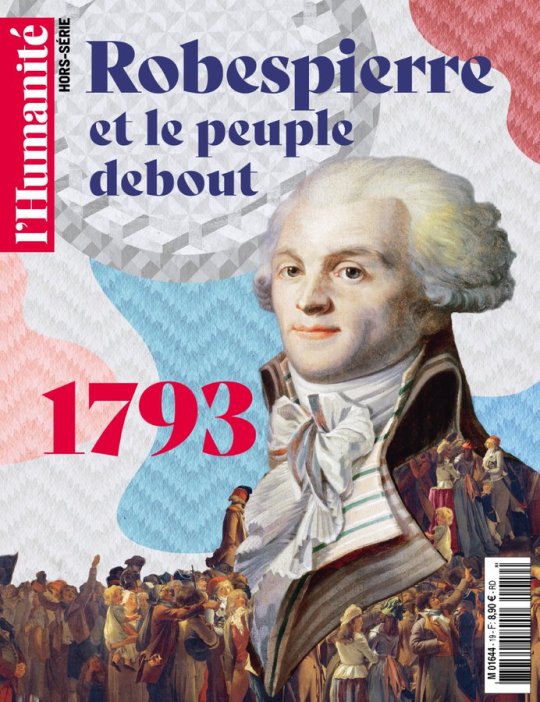
#french Revolution#frev#Robespierre#I had to comb three Relay stores in the same train station to find this
135 notes
·
View notes
